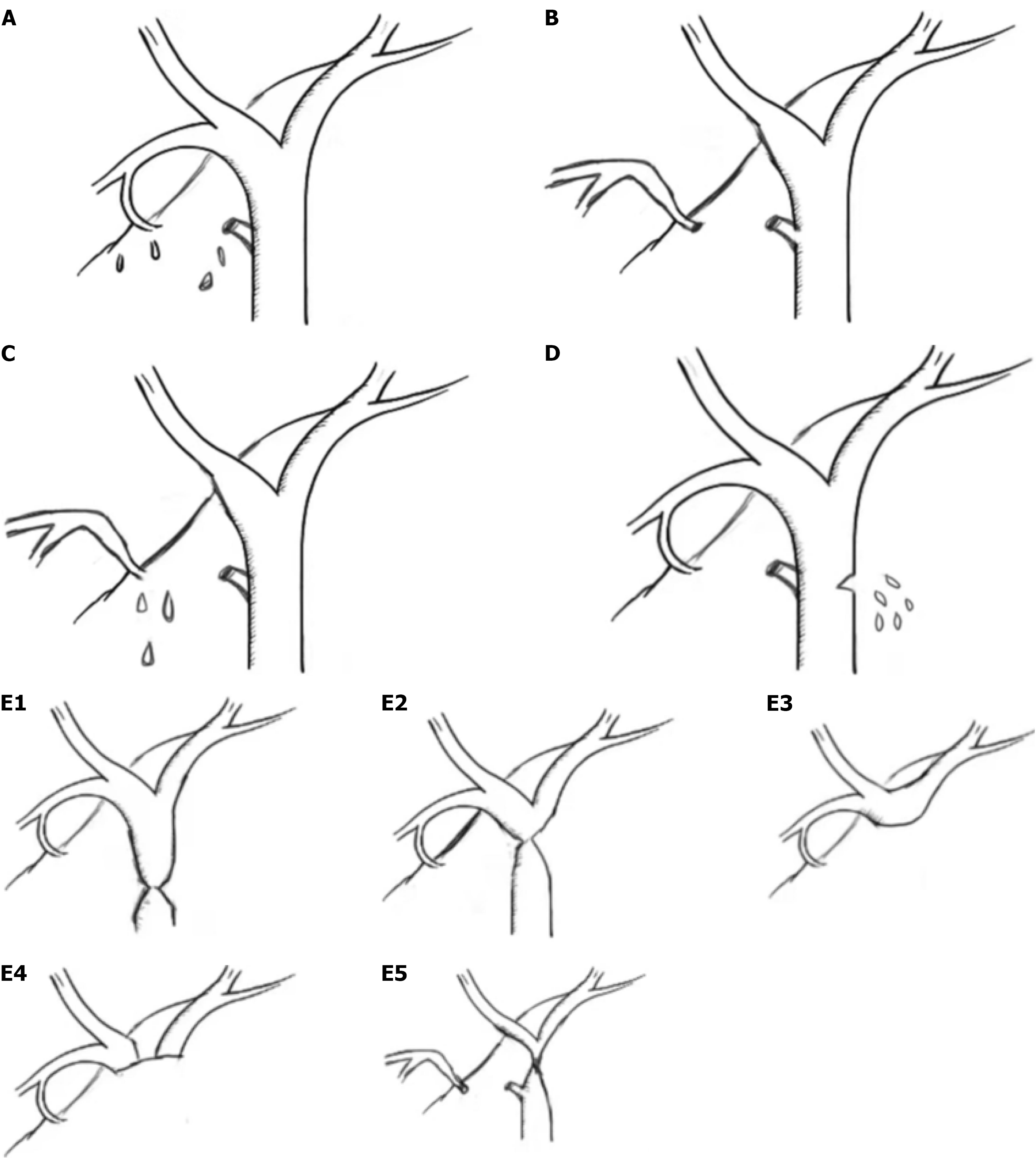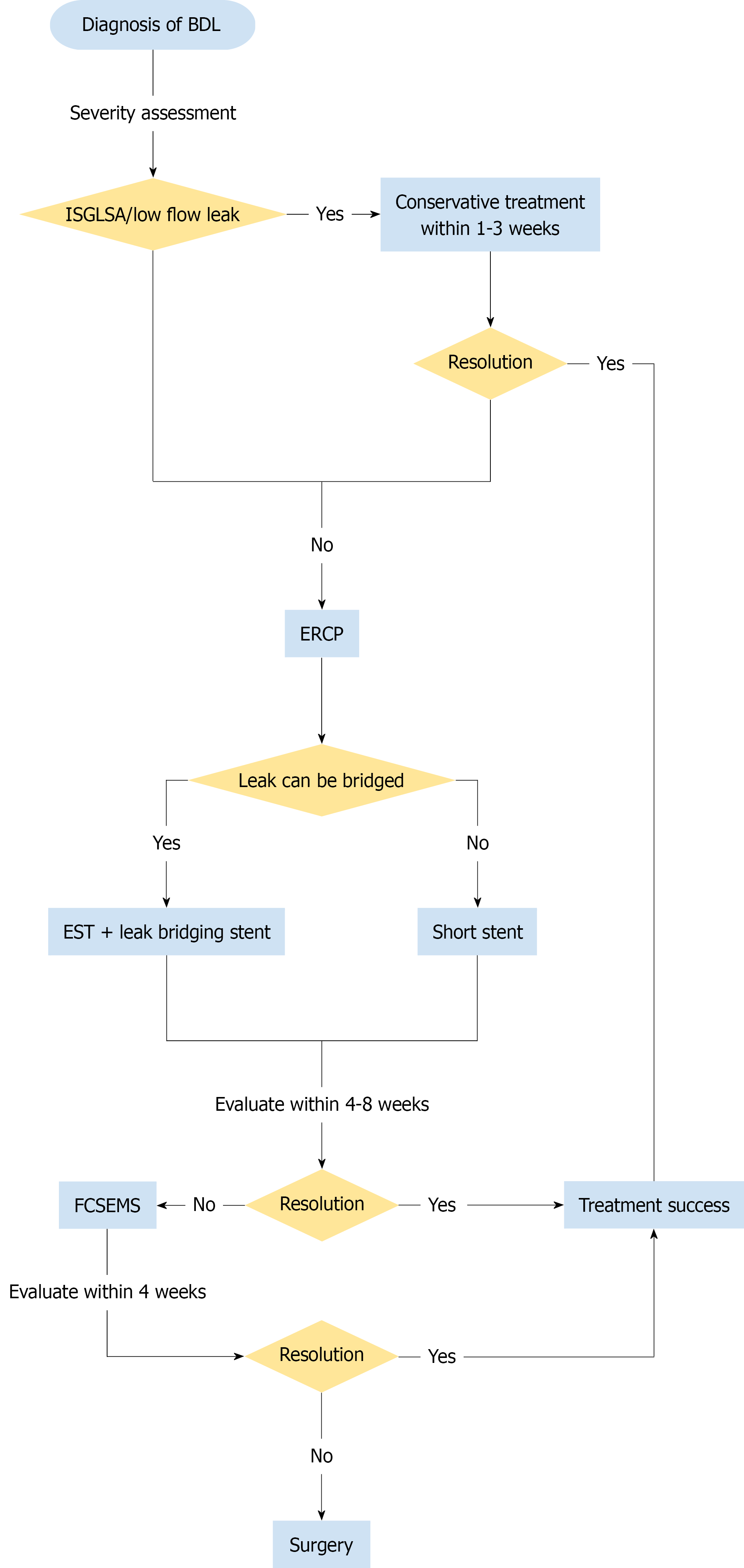Copyright
©The Author(s) 2025.
World J Gastrointest Endosc. Oct 16, 2025; 17(10): 110172
Published online Oct 16, 2025. doi: 10.4253/wjge.v17.i10.110172
Published online Oct 16, 2025. doi: 10.4253/wjge.v17.i10.110172
Figure 1 Strasberg and Bismuth classification of bile duct injuries.
Type A: Bile leak from a cystic duct stump or Luschka’s duct; Type B: Occlusion of the right posterior sectoral duct; Type C: Bile leak from a transected right posterior sectoral duct; Type D: Bile leak from the main bile duct involving < 50% of its circumference; Type E1: Transection of the main bile duct with a stricture located > 2 cm from the hepatic hilum; Type E2: Stricture located < 2 cm from the hilum; Type E3: Hilar stricture with preserved communication between the right and left hepatic ducts; Type E4: Hilar stricture with complete separation of the right and left hepatic ducts; Type E5: Combined stricture involving the main bile duct and the right posterior sectoral duct. Types E1-E5 correspond to Bismuth types I-V.
Figure 2 Suggested treatment algorithm for bile duct leak.
BDL: Bile duct leak; ERCP: Endoscopic retrograde cholangiopancreatography; EST: Endoscopic sphincterotomy; MPS: Multiple plastic stents; FCSEMS: Fully covered self-expandable metal stents.
- Citation: Chen DX, Chen SX, Zhang GJ, Liang YW, Han YM, Zhai YQ, Li MY. Endoscopic management of bile duct leaks: Current strategies and controversies. World J Gastrointest Endosc 2025; 17(10): 110172
- URL: https://www.wjgnet.com/1948-5190/full/v17/i10/110172.htm
- DOI: https://dx.doi.org/10.4253/wjge.v17.i10.110172














